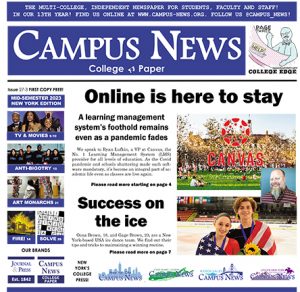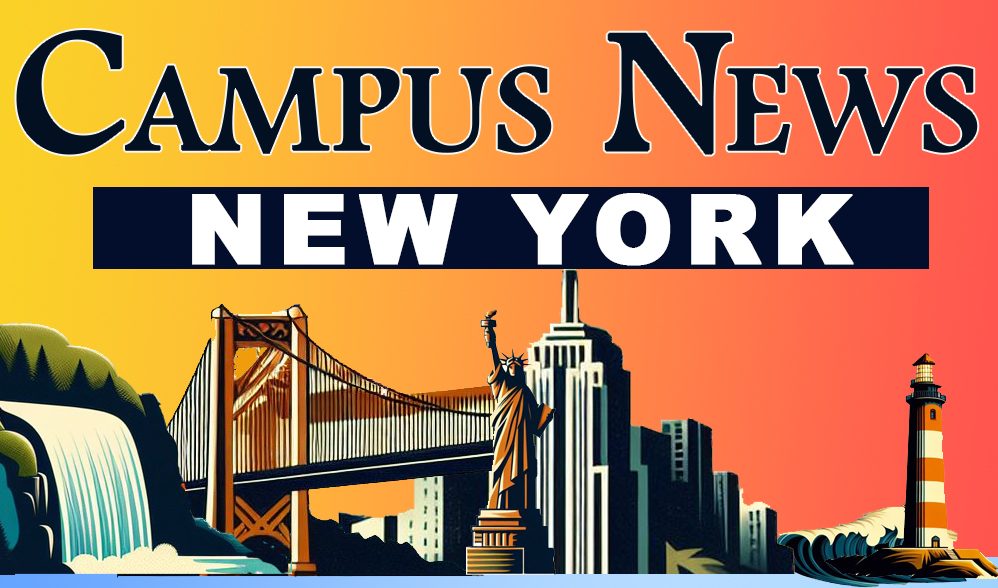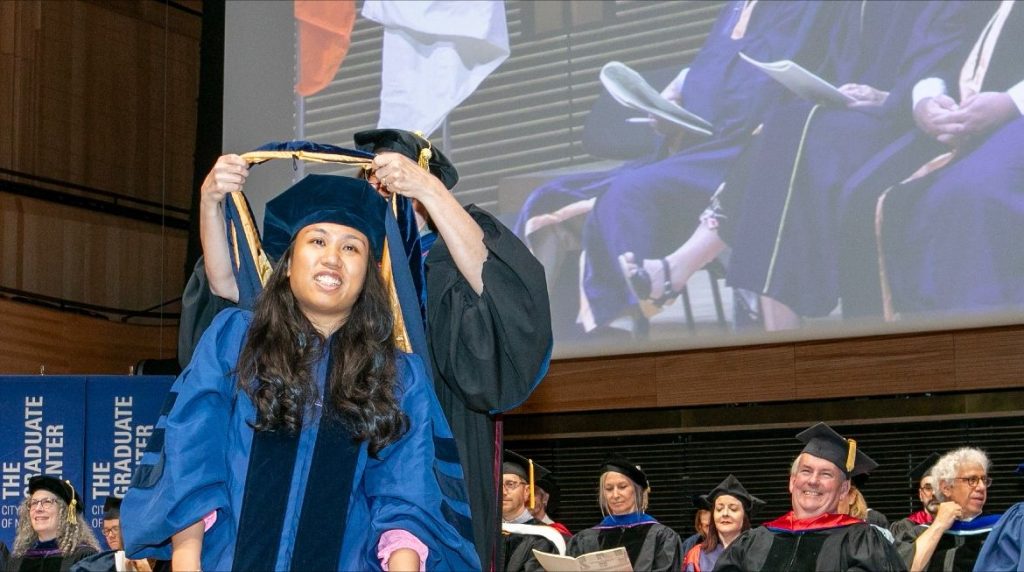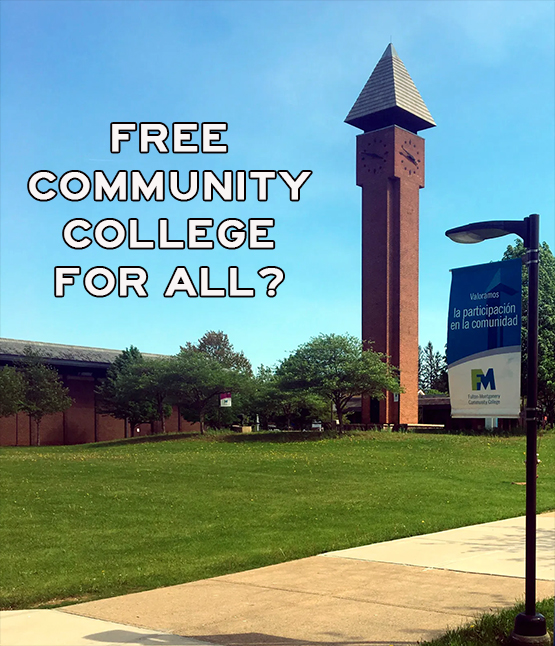By Darren Johnson
Campus News
Before the pandemic, sure, colleges used Learning Management Systems (LMS), but they really came to the forefront when the pandemic hit and physical buildings were shuttered.
(In case you don’t know what an LMS is, it’s essentially a service to organize online classrooms with discussion boards, lesson modules, quizzes, grading, and so on. Every student and professor is issued an account on one. I use them in my teaching, as do most instructors today.)
As the vast majority of classes before the pandemic were taught 100 percent in-person, many professors weren’t using their LMS much; maybe they used it as a place to post their syllabus and some extra credit assignments.

But the pandemic forced all professors to use their LMS more robustly, and, even though Covid restrictions have waned, they have kept the habit going.
Up to and into the pandemic, Canvas became the No. 1 LMS in the college world; not just four-year colleges, but they also have a plurality share of the community college market, nearing 50 percent of that market, as well.
In April 2021, I had spoken with Ryan Lufkin, Vice President of Global Strategy at Instructure, makers of Canvas, just as Canvas was emerging as the dominant platform. You can find that interview here.
Recently, I interviewed him again, but this time focused on community colleges, which have seen double-digit declines in recent years. Nationally, community colleges now have enrollments at their lowest point since 2007. In New York State, the problem is even more pronounced. In 2012, there were 243,000 students enrolled in SUNY two-year colleges. Now that number is just 159,000, according to SUNY’s web site. Some community colleges have lost nearly half of their students in the past decade.
I wondered if Canvas had some insights to share about the community college enrollment trends; my theory was perhaps the leap from in-person classes to online classes and hybrids is leaving some students behind. Lufkin had other ideas. Our chat:
DJ: Is Canvas pretty big in the community college world?
RL: We are. At this point, we’re about 50 percent of the total higher education students in North America, somewhere around there, based on who’s counting what. And a large percentage of those are community colleges, especially large community college systems like California. We have a lot of community colleges.
DJ: Canvas really started to come to the fore probably five years ago or so ago, it really started to become dominant. Do you feel like the pandemic kind of sped things along for your company?
RL: Yeah, you’re spot on. 2017 is the year that we pretty much started, most new implementations of an LMS software were Canvas starting in 2017. We’ve dominated that since then. What’s interesting is that we saw that most colleges and universities had an LMS before Covid. But what we saw is really the usage rates go up significantly. Schools that were using an outdated or aging system that didn’t provide a great online learning experience were the ones looking around and saying, “Okay, we actually put off upgrading for too long. Let’s go to Canvas.” And so, we saw a very large increase in higher ed, but then also in K-12 because whereas in higher ed, the LMS was a must-have at that point, in K-12, especially in high school and junior high, it was a “nice-to-have” and it was very underutilized in the K-5 space. Covid drastically drove those numbers right up. All of a sudden, the need to provide blended learning, if not fully, really moved to the forefront, and even today it’s raised the bar. We jumped at least 10 years ahead from a technology adoption standpoint over the course of about a year and a half, largely driven by the need for distance learning around Covid.
DJ: Canvas gives schools more options now. It’s a game-changer, really.
RL: What we’ve seen now is that we’ve had an epic snow year here in Utah and there are now no more snow days. There are now “distance learning days.” And because they have the technology infrastructure, they just don’t have that same type of disruption they used to see in the past around weather events and things like that.
Okay. Yeah, so definitely, Covid helped because a lot of IT departments probably were looking at their systems and the demand did move online. This definitely was a more popular, easier-to-use, up-and-coming system. And maybe they had some antiquated system that really wasn’t doing it for them anymore. It was their chance to look at their system and decide on something new.
DJ: But despite these new learning options, enrollment at community colleges is dropping precipitously.
RL: It’s been interesting to watch the enrollment trends and see four-year publics and privates sitting relatively flat and community colleges declining. One reason for that is, at least right now, we’ve got an incredibly low unemployment rate, and community college enrollment generally mirrors the unemployment rate. When the unemployment rate goes up, community college enrollment goes up as people go back to learn skills.
DJ: And there’s more competition. Four-year colleges are adding programs that used to be the domain of community colleges, like nursing.
RL: We’ve also seen that four-year universities are looking at more non-traditional learners, so upskilling and reskilling of adult learners, to switch careers or improving their careers. And that traditionally has been the domain of community colleges. And so to some extent, what you’re seeing. four-year college and universities expanding their offerings and taking some of those students from community colleges.
The interesting thing has been with the community colleges is concurrent enrollment with high school students is one of the reasons they haven’t seen a bigger drop.
DJ: If you are the LMS at high schools, that could aid the transition to colleges, where you also are the LMS.
RL: And that’s interesting because from a technology standpoint, one of our challenges is, okay, how do we make the transition from high school to college seamless? From a technology standpoint, how do we let the LMS, the technology, disappear in the background? So, students are seamlessly transitioning between the community college and their high school. And that, for us, has been one of the bigger challenges. How do we help bridge that gap? How do we make that as seamless as possible?
Last year I was down at Palo Alto College. Most of the students we talked to were first-generation college students who were in concurrent enrollment. And many of them had never actually stepped on campus. They had only ever been online with Canvas
We got there when we were filming and they said, “This is one of our first weeks back for a lot of our students. And students were like, “This is my first time on campus. I’ve been taking courses for a year, all online, and now I’m finally getting to meet my professors in person.”
DJ: A lot of LMS fluency starts before college. Is Canvas also dominating the high school market?
RL: We are the No. 1 LMS for K-12 in the country, and we always say we want our technology just to disappear into the background. Using the same LMS from kindergarten all the way through college and into grad school, and into corporate learning partnerships that we’re starting to see, truly lowers it; it’s one less thing people to have to learn about, using the new technology.
DJ: Personally, before the pandemic, as an instructor, I was using whatever the LMS was provided, in the most basic of ways. Now, I found since the pandemic, I use it a lot more, even though I’m teaching live in-person classes.
RL: Yeah, the Holy Grail really is a high flex classroom, right? Where in-person or online, teaching, learning is at the same time. And, to do that, you’ve got to be using the LMS technology in the classroom. And we’ve seen great examples of educators doing that now, where they can truly teach the course in a high flex way that meets the needs of all their students.
DJ: What’s your percent of the marketplace now?

RL: It puts us at 40% by number of institutions and right around 50% by student enrollment in higher ed. We’re No. 1 in K-12, with Google Classroom being No. 2.
DJ: Many community college programs are hands-on, like automotive repair and culinary. How do you address that?
RL: The other aspect of that is what you’re seeing is a lot of community college trying to figure out the competency-based education model. How do you bring somebody in, test and figure out what they already know; and then only teach them new skills above and beyond that?
Community colleges like Salt Lake Community College, for instance, which is a very large community college in Utah, has really been doing a lot trying to understand the competency-based model at scale, which is not easy. Competency-based for individual programs can be achieved relatively easily. When you try to scale that across whole programs, whole institutions, that becomes much more difficult.
DJ: Are you finding, community college students are a different audience than the four-year college students in that maybe they don’t have as good computers or technical training as the students in a four-year college, who more often came from homes and schools with more modern computer setups and training?
RL: Interestingly, when you start looking at emerging technologies like video content and recording yourself with your phone, there’s a lot of those things that can be taught in a virtual space if you can figure out the equipment needs.
Being more proactive in adopting technology, like augmented reality and virtual reality, I think community colleges are going to be at the forefront of that as they try to figure out those skills and methodologies.







Facebook Comments